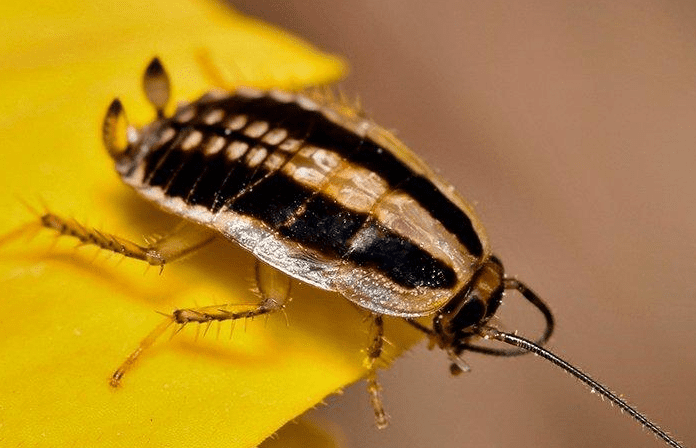Flying Asian Cockroaches
The main difference between Asian Cockroaches and German Cockroaches is flying capacity; Asian cockroaches can fly whereas German cannot.
Flying Cockroaches are among the remarkably typical pests and have been for over 300 million years, as indicated by fossil remnants.
Because cockroaches are all nocturnal, populations can quickly grow to enormous proportions before their presence is noticed.
There are numerous other common cockroach species, including the brown-banded and oriental roaches and the recently identified Asian cockroach (Blattella Asahina).
Because the Asian roach primarily feeds on plant material. It does not pose the same risk of disease transmission as other species; the German roach primarily feeds on garbage.
However, the Asian roach, like other cockroaches, can cause asthma attacks in people who are allergic to insects. 1
The Asian cockroach was first detected in the US in Florida in 1986, and it took almost two decades for it to head west. Now it is moving towards the Mexican border.
Furthermore, this large insect flies indoors at night, making it a real annoyance.
Asian Cockroaches Vs. German Cockroaches
People may misinterpret Asian cockroaches for miniature flying moths when they first see them.
Or they may think they are looking at German cockroaches because the two species mirror each other, but there are variations, especially in behavior.
Adult German and Asian cockroaches are about 5/8 inch long and brown, with two darkened parallel lines going lengthwise behind their heads.
Asian cockroaches are powerful fliers with continuous flights of at least 120 feet, unlike German cockroaches.
When a person waters a composted plant bed with a hose, the water agitates the roaches, inducing them to fly out of the mulch like tiny moths. Alternatively, you may see them flying out of the lawn as you trim.
German cockroaches select to live indoors and are a significant pest in the home. Asian cockroaches choose to live outdoors in mulched beds, compost stacks, and lawns. Their communities can range from 30,000 to 250,000 per acre.
They turn into active at dusk and are attracted to lights. They often fly into homes through openings, such as lighted doorways or windows.
Once inside, they fly to and crawl on illuminated television or computer screens and walls while the lights are turned on at night.
This is when people believe they have discovered a German cockroach invasion in their home. However, German cockroaches do not fly.
Many people are startled when they come upon Asian roaches in their homes. Although we don’t prefer any roaches inside, the good news is that indoor infestations are rare.
Asian cockroaches are not insecticide-immune, but they are tough to control because of their large population and capacity to fly long distances.
Because they can fly 120 feet or over in a single flight, they must be treated in considerable areas around a house. In extension, cockroaches in adjacent untreated areas may lead to reinfestation.
Because of the numerous infested areas in adjacent lawns, mulch, and wooded areas, continuing sprays around the perimeter of structures are generally ineffective.
Adults enter homes through windows and doorways and immediately fly to walls, avoiding baseboards and other common German cockroach treatment areas.
The most effective control has come from using insecticide baits (labeled for roach control) in infested areas outside.
FAQ
Is It True That Asian Cockroaches Sting?
Though bites are rare, Asian cockroaches have biting jaws that can pierce skin if you take it into the hand. They do not pursue to bite humans or other creatures because they are not blood feeders.
Are Asian Cockroaches Infection Carriers?
The Asian cockroach, like other roaches, can transmit microorganisms as it flies. Germs from outdoor animal dungs, for illustration, can be brought indoors by insects.
Do Asian Cockroaches Wreak Destruction On Garden Plants?
While Asian cockroaches have been detected eating lettuce, cabbage, strawberries, and other plants, they are not seen as serious garden bugs.
Except because outdoor Asian roaches often fly indoors, there is no reason to be disturbed about Asian roaches in the backyard.
Are Asian Cockroaches Useful?
There is evidence that Asian cockroaches prey on plant-corruption pests such as bollworms, which influence profitable crops.
However, the evidence does not validate encouraging Asian roaches as a biological control.



























